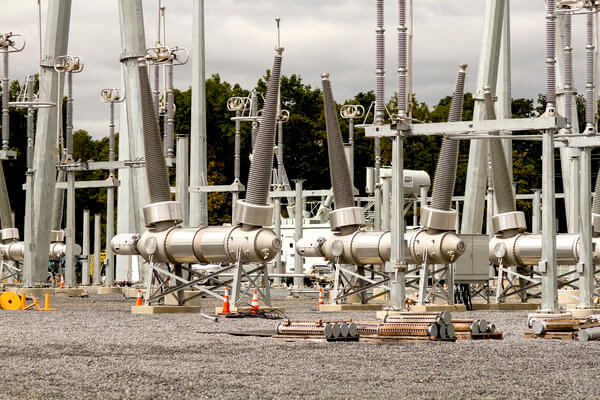Improving Safety Through Electrical Substation Design
The Institute of Electrical and Electronics Engineers (IEEE) sets out practical rules for the safe construction, operation and maintenance of electrical substations. The IEEE has developed these detailed codes with one primary goal in mind: safety.
Following National Electrical Safety Code Standard C2-2017 ensures that electrical substation design will meet uniform standards.
The code sets out requirements for:
- Enclosure of electrical equipment
- Rooms & Spaces
- Illumination
- Stairs, passageways, floor openings
- Exits
- Installation requirements
- Protective grounding
- Minimum Height & Clearance Requirements
Substation Design Guidelines
The National Electrical Safety Code Standard C2-2017 is a highly technical document. However, there are several guiding principles behind the substation design guide. We will provide an overview of the concepts included in the standards and the rationale behind them.
Substation Grounding Grids
The first and arguably most important safety feature of a power substation design is the grounding system. All metallic structures within and surrounding the substation should be connected to a station ground grid. During a fault, there is a total ground potential rise where electricity is discharged into the earth. From the location of the discharge moving outward, there is a gradient potential ground rise. This calculation is commonly referred to as “Touch and step potentials.” If a metallic surface, such as a metal fence post, lies within the radius of a “touch and step potential” it must be properly grounded to remove the risk of electric shock during a short circuit.
Minimum Height and Clearance Design Standards
It comes as no surprise that energized equipment should be given a wide berth. Electrical substation regulations dictate that all live parts and equipment should be given enough clearance to reduce the risk of accidental contact. If the desired clearance cannot be achieved, live parts should be enclosed with a protective barrier.
Similarly, ungrounded parts and other substation elements should be at least 6-8 feet from the ground. This is to establish enough space so that a person standing on the ground cannot touch a substation element that could become energized. When calculating this distance, it’s important to measure the clearance from the bottom of any insulators or other structures that could be energized through a flashover.
Electrical Substation Passageway Design
All passageways, stairs and catwalks should be clear and well lit for personnel to navigate safely. Railing and handrails should be included where appropriate in the power substation design. Workspaces should be clear of obstructions and tripping hazards. When appropriate, multiple exits should be available and well marked. Fire suppression equipment should be easily accessible.
Facade & Fencing Design
In open areas, electrical substation regulations require that stations be enclosed by a fence. In more densely populated areas, substations are often disguised in a freestanding facade. They can also be built underground or within buildings that serve dual purposes. No matter where an electric substation is located, it needs some type of protective barrier to keep intruders out. Cleverly designed facades are often attractive. Since they are designed to blend in with their surroundings, they can reduce the temptation to break in or vandalize the structure. Structures that form a perimeter around a substation must be grounded. Additionally, they should be robust enough to keep people and animals out.
Substation Design
With these design guidelines in mind and the National Electrical Safety Code Standards, your power substation design is well on its way to becoming a safe and secure structure. Attention to detail in the design process will help see that your substation design is reliable, efficient and, most importantly, safe.
Matrix PDM Engineering Design Capabilities
At Matrix PDM Engineering, we design, program and commission industrial electrical facilities. We provide power distribution design and site layouts. Through our sister subsidiaries, we can also offer procurement and construction services to provide complete EPC capabilities.
We have more than 30 years of experience serving the power industry. We partner with our clients to provide solutions that are reliable and efficient for many years of operation. Matrix PDM provides services for new facilities, OEM equipment and repairs or replacements for existing facilities and equipment. Clients around the world trust our expert engineers to provide proven solutions. Put our standard to the test and contact us today.
